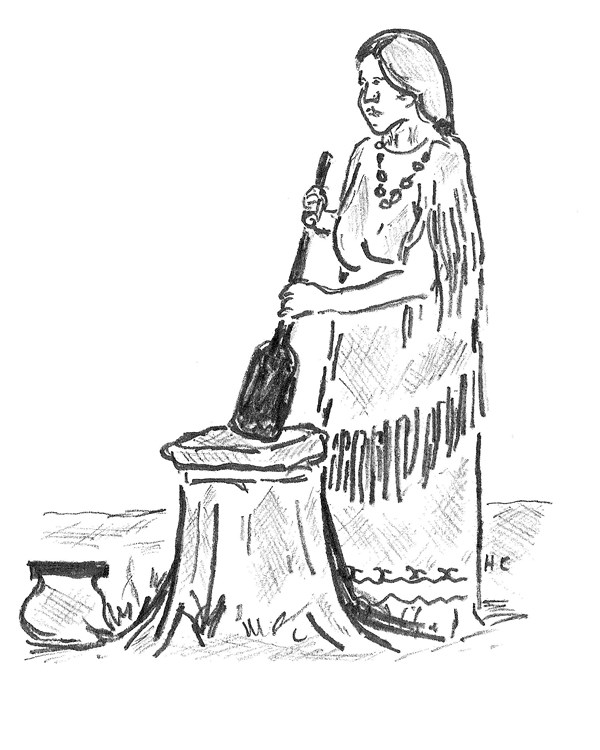Last updated: September 26, 2024
Person
Queen Alliquippa

NPS by artist Herb Clevenger
Queen Alliquippa was a prominent leader of the Seneca nation, likely born circa 1679. She enters the historical record when British and French colonists start writing about their journeys in the Ohio River Valley. By this time, she was considered to be “old” and was said to reign “with great authority.” She and her people inhabited villages located around the Forks of the Ohio (present day Pittsburgh, PA), and interacted favorably with several major British leaders during her lifetime.
Alliquippa was a strong British ally. During George Washington’s return to Virginia after his unsuccessful expedition in 1753 to diplomatically urge the French out of the Ohio River Valley, he met with the queen. He recorded, “I went up about 3 miles to the Mouth of Yaughyaughgane to visit Queen Alliquippa, who had express’d great Concern that we pass’d her in going to the [French] Fort. I made her a Present of a Match Coat; & a Bottle of rum, which was thought much the best Present of the two.”
In April 1754, after the fall of the British Fort Trent at the Forks of the Ohio and the establishment of the French Fort Duquesne in its place, Alliquippa and her people moved.
Alliquippa and Washington’s paths crossed again in 1754. In early June, Washington was visited by a number of his American Indian allies. Alliquippa had brought her entire village to the Great Meadows. The warriors were asked to stay and help fight the French, but all the American Indians left before the July 3 Battle of Fort Necessity. After the British defeat, Alliquippa and her people moved to a trading post, Augswick, in central Pennsylvania. She died sometime before December 23, 1754.
Queen Alliquippa was one of a few strong allies on the side of the British in the early stages of the French and Indian War. She exhibited powerful female leadership and exercised her authority in interactions with prominent male European leaders, including William Penn and George Washington.
Author: Catarina Hurtado
Sources:
Sipe, C. Hale. Indian Chiefs of Pennsylvania, Wennawoods Publishing, Lewisburg, PA. 1994
Madarasz, Anne. "Women's History Month: Political Leaders." Making History: The Heinz History Center Blog. Senator John Heinz History Center. March 18, 2015. https://www.heinzhistorycenter.org/blog/at-the-history-center/womens-history-month-political-leaders.
“Journey to the French Commandant: Narrative,” Founders Online, National Archives, https://founders.archives.gov/documents/Washington/01-01-02-0003-0002
